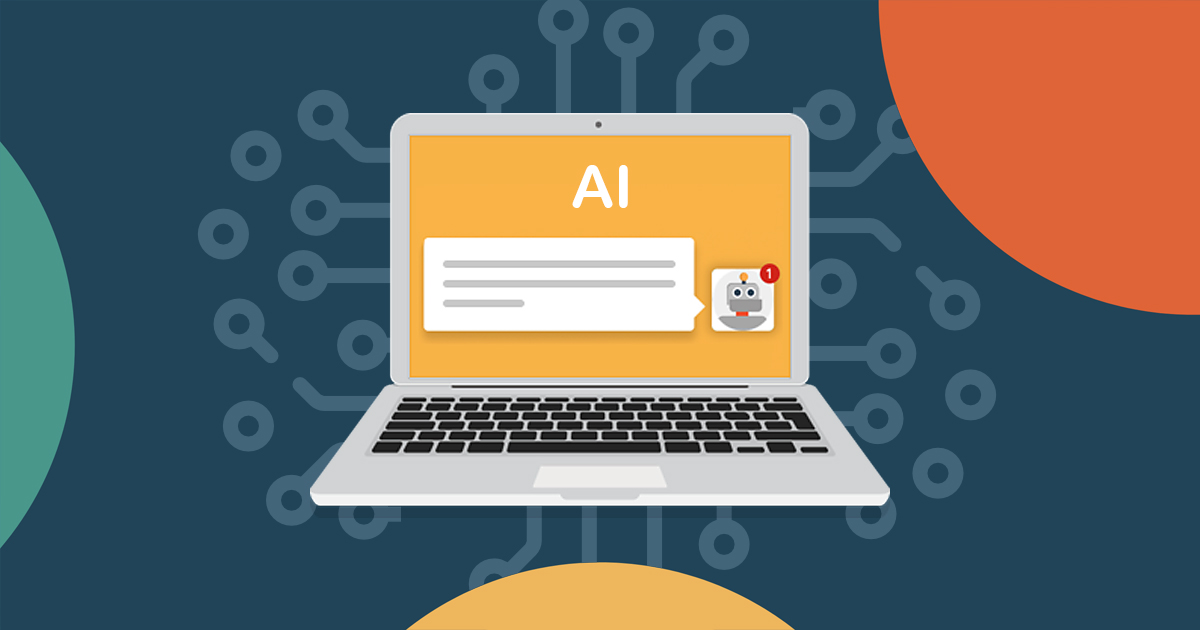
The last few years have seen an explosion in the use of artificial intelligence (AI) and machine learning (ML) technologies for marketing automation (MA).
Marketers are increasingly turning to AI-powered tools to:
- Streamline operations
- Personalize campaigns
- Gain deeper insights into consumer behavior
…and so much more.
However, when you take a step back and look at the big picture, one thing becomes clear:
With great power comes great responsibility.
Currently, there aren’t many guidelines or regulations in place for the use of AI in marketing automation, which brings up important questions about how to use this powerful technology ethically and responsibly.
Here at MAC, our 55+ certified MA/CRM consultants have been at the forefront of AI-powered marketing strategies for years.
In this guide, we’ll share our best practices for using AI in your marketing automation efforts while maintaining ethical standards (and keeping your customers’ best interests at heart).
How AI is Used for Marketing Automation
Before we dive into best practices, let’s first establish a common understanding of how AI is utilized in marketing automation.
Many marketers use AI processes like natural language processing (NLP) and machine learning algorithms. These technologies allow marketers to analyze large amounts of data and automate tasks that would otherwise be time-consuming and manual.
They also empower marketing professionals to plan and implement creative marketing strategies that are more personalized and have a human element, optimized to delight customers and turn them into loyal brand advocates.
Let’s break these concepts down further.
Common AI Applications in Marketing
- Audience targeting: AI analyzes past audience data and ad performance to identify and segment customers who are more likely to buy from you.
- Personalization: AI helps deliver relevant and personalized experiences to visitors based on their needs and preferences.
- Content curation and creation: AI-powered tools assist in content creation, from generating social media posts to writing reports based on data and information.
- Programmatic media bidding: This automated process uses machine learning to buy and sell online ad spaces, showing relevant ads to target customers.
- Predictive analytics: AI-powered predictive modeling analyzes customer behaviors and trends to forecast future outcomes and optimize marketing campaigns.
- Dynamic pricing: AI-controlled modules enable businesses to arrive at optimum pricing for their products or services, even in narrow time frames.
- Chatbots: These AI-driven interfaces simulate human intelligence by interpreting customer queries, providing customer service, and generating leads. Drift and Marketo Dynamic Chat are two examples of chatbots that have AI capabilities.
As AI continues to evolve, its role in marketing automation is expected to grow.
Recent research from Influencer Marketing Hub reveals these fascinating stats:
- 61.4% of marketers have incorporated AI into their marketing efforts.
- 44.4% of these professionals have specifically used AI for content creation.
- 19.2% of marketers allocate over 40% of their marketing budgets to campaigns driven by AI technology.
This trend underscores the increasing importance of AI in shaping the future of marketing strategies and customer engagement.
Ethical Considerations in AI-Powered Marketing
Like any tool, AI can be used for good… or for evil.
As professionals, we must establish ethical guidelines and moral boundaries when using AI in marketing automation.
Here are some considerations to keep in mind:
Data Privacy Concerns
There’s growing apprehension among individuals regarding the collection and use of their personal information. According to the IAPP Privacy and Consumer Trust Report 2023, 57% of consumers agree that AI poses a significant threat to their privacy. Many consumers fear that data collected by AI companies will be used in ways that make them uncomfortable.
These privacy concerns have led to a phenomenon known as “privacy self-defense,” where consumers are becoming less willing to share their personal information.
Some individuals have resorted to withholding personal information, providing false biographical details, or removing information from mailing lists altogether.
Transparency in AI-Driven Decisions
Transparency in AI-powered marketing is crucial for building trust with users and stakeholders. It involves understanding the ethical, legal, and societal implications of AI and how transparency builds trust.
According to IBM, Explainable AI (XAI) refers to the ability of an AI system to provide easy-to-understand explanations for its decisions and actions.
To enhance transparency, you should:
- Develop visuals or simplified diagrams to illustrate how complex AI models function.
- Establish a comprehensive documentation process that tracks changes made to AI ecosystems.
- Provide regular and updated transparency reports that note changes in AI systems.
- Be clear with your customers about how their data is collected, stored, and used.
Avoiding Bias and Discrimination
AI bias in marketing can lead to skewed outputs due to flaws in training data, algorithms, or both. This bias can influence who sees ads, how leads are scored, and who becomes a customer.
So, how do you mitigate bias and discrimination in AI-powered marketing? Here are our top tips:
- Choose AI tools wisely: Research vendors who prioritize ethical AI practices and transparency.
- Conduct regular audits: Look for patterns that may suggest bias in AI outcomes. For example, if your ad targeting solely focuses on a single demographic or geographical area, it may be time to reassess.
- Provide feedback: Communicate potential bias issues with AI vendors. If the tool has a feedback loop, make use of it.
- Consider bias mitigation partnerships: Work with consultancies specializing in AI bias audits and mitigation strategies.
We’ll discuss these tips in more detail as we move on to how to adopt responsible AI practices in your organization.
Implementing Responsible AI Practices
To implement responsible AI practices in marketing automation, you must establish a clear AI governance framework, as defined by MarTech.
This framework serves as a process to manage the use of AI and mitigate associated risks. The primary objective of AI governance is to ensure that AI algorithms, data usage, and processes comply with internal regulations.
Creating an Oversight Committee
If company resources permit it, we recommend creating an AI oversight committee. This group should include diverse individuals from across the company, including leaders from IT, security, legal, and representatives from core business groups such as HR and marketing.
The committee’s responsibilities would include:
- Establishing the company’s overarching relationship with AI
- Approving and restricting use cases
- Identifying potential risks associated with proposed AI applications
- Developing a generative AI policy
Revisit this policy regularly to account for evolving technologies and the risks that come with it.
Training Marketing Teams on AI Ethics
Want to promote responsible practices within your organization? It all begins with AI education.
This training provides employees with insight into the rationale behind policies, allowing them to identify and mitigate risks while spotting opportunities for AI that align with the company’s values.
We recommend covering the following topics:
- Algorithmic bias: Recognize and address biases in AI algorithms to ensure fair treatment for all consumers.
- Transparency: Teams must grasp the significance of explainable AI and how to convey AI-driven decision processes to customers. Otherwise, consumers may feel like they have no control over their data… and that leads us into our next point.
- Consent and control: Respecting consumer rights is paramount, giving them the choice to opt out of AI-based marketing campaigns and the ability to modify their data.
- Accountability: Employees need to comprehend their role in the actions of AI systems and the necessity of conducting regular reviews and assessments.
Balancing AI Automation with Human Oversight
At the AI/MA crossroads, one of the biggest questions marketers ask is:
“Which tasks require human brain power 100% of the time?”
At MAC, we don’t believe that AI can replace human creativity and intuition.
However, we also believe that humans shouldn’t have to be solely responsible for spotting and mitigating AI errors.
To find a balance, you should consider the following:
Areas Where Human Judgment is Needed
While AI can handle a large number of repetitive, data-driven tasks, its use is limited in more sensitive areas. Some examples include:
- Crafting marketing strategies: Humans play an integral role in developing creative campaigns and strategies that align with brand values.
- Interpreting customer emotions: While AI may be able to detect certain emotions through text or voice analysis, human intuition is still necessary for truly understanding and empathizing with customers.
- Ethical decision-making: In situations where ethical considerations are essential, humans should have the final say and not rely solely on AI outputs.
A Concrete Example of What Ethical and Responsible AI Use Can Look Like
Let’s consider a hypothetical scenario about a sustainable energy company that has recently integrated AI into its marketing strategy:
- Recognizing the importance of ethical AI, it established a comprehensive governance framework, including an oversight committee (exactly as we mentioned earlier).
- This committee meets quarterly to review AI applications and their impact, ensuring alignment with the company’s values.
- The company also invested in training its marketing team on AI ethics, with a focus on identifying algorithmic bias and maintaining transparency with customers about data usage.
- By employing AI tools to analyze customer preferences and behaviors, it crafted personalized marketing campaigns that increased engagement while respecting consumer rights through easy opt-out options.
- During implementation, the oversight committee conducted audits of AI models to mitigate biases, ensuring fair representation of all demographics in outreach efforts.
As you can see, with proper governance and training, AI can be used ethically and responsibly in marketing automation without compromising consumer trust.
In other words? AI is not all doom and gloom!
Leverage the Power of AI with MAC
The responsible use of AI in marketing automation opens up exciting possibilities while posing its own set of challenges. Ultimately, successful AI integration enriches human creativity and decision-making rather than overshadowing it.
If you can effectively balance AI with human intervention, you’ll have a powerful tool at your disposal for creating personalized and effective marketing campaigns.
Ready to implement ethical AI into your marketing strategy? Contact MAC for a consultation with our team of certified experts.


